St. Anthony’s Church Timeline
Portuguese & British Rule
For over three centuries, a village earlier known as Vancola, which is present-day Vakola comprised of 30 Catholic families who attended religious services at Our Lady of Egypt Church, Kalina nearby. They traveled in great hardship in bullock carts, especially in the monsoons as the mud-road and trenches got submerged making it impossible to go to church. The Kalina Church had been founded by the Franciscans between 1606 – 1609, which Fr. Paulo da Trindade (1930) refers to in his writings as two villages – Kole-Kalyan and one near it – Vancola.

1914
Fr. Cyril A Abreo, who was Assistant Parish Priest at the Kalina Church conceptualized a Chapel and a plot was donated by Mr. John Rodrigues (Jamboo), a big East Indian landlord. It took 7 years to complete as World War 1 had broken out. During this time, masses and services were held in a hut at near-by village.
1921 - 1 January
The Chapel was blessed, dedicated to St. Anthony and affiliated to the Kalina Church which took care of the spiritual needs of its predominantly farmer population. Over the years, in search of employment many Catholics migrated to Bombay, especially from Goa, Mangalore and adjacent rural areas. The landlords built chawls / rooms and rented them to these migrants.
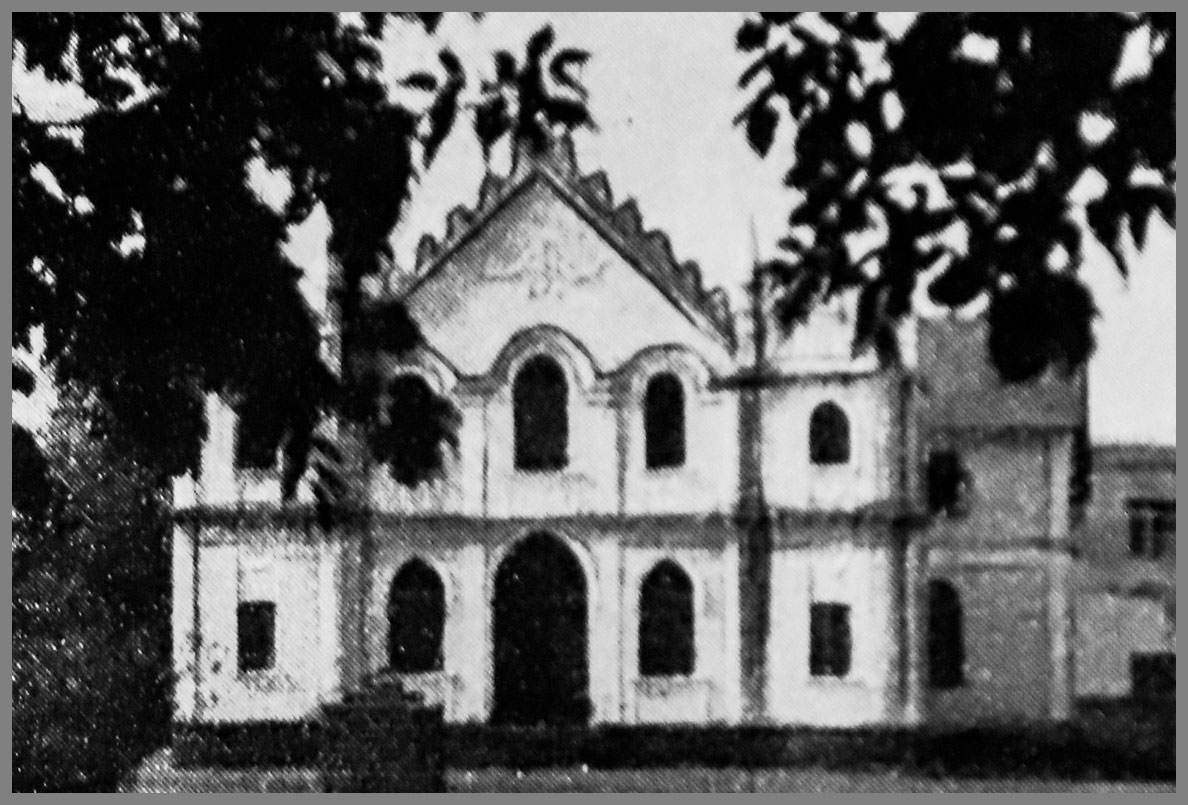
1937
The number of Catholics in Vakola was rapidly rising as Bombay urbanized and the Archbishop observed it was becoming difficult for the Kalina Church to spiritually administer to these Catholics and hence, appointed Fr. Mendis as Priest-in-Charge of the St. Anthony’s Chapel at Vakola.
1945 - 1 July
The number of Catholics had increased from the initial 30 families to over 400 families making it difficult to accommodate them in the Chapel and a decision was taken to build a church in its place. Accordingly, an autonomous parish and church was erected with Fr. Cyril Pinto being appointed as the first Parish Priest of St. Anthony’s Church, Vakola.
1949
A need was also felt for a school and Fr. Michael Rego was given responsibility to start St. Anthony’s School, which initially had just 2 class-rooms. A small parochial house served as residential quarters for the couple of priests there. He did much work to make the school a reality.
1954
Fr. Simon Fernandez who succeeded Fr. Michael Rego established the St. Anthony’s Guild for benefit of the widows and poor with the help of the village elders. His untimely death cut short his tenure and he was buried in the Church below the spot, where presently the statue of Our Lady of Lourdes statue is positioned.
1957 - 1 June
It was World War 2 time and the British stationed some of its officers in the Anand Nagar area and the job of laying the Vakola pipeline to get water from Vaitarna lakes had started. A parishioner, Mr. EA Lawerance was the engineer-in-charge of it. He volunteered to fill the marshy land and the pond in front of the Church by dumping the pipeline excavated mud into it. He advised then Parish Priest, Fr. Ayres Fernandes who agreed, but all the best intentions and efforts, they could fill in only three fourths of the area. Much water still remained and land could not be reclaimed. It is believed then fervent intercession to St. Anthony was responsible for the construction of the Western Express Highway and Fr. Ayres Fernandes was able to get the contractors to dump mud and lay solid ground. All the parishioners pitched in with contributions, as the mud did not come free. It was purchased Rs. 12.50 per lorry.
1958
The ground though was protected only with a barbed wire fence and encroachments or thefts was a distinct possibility. It was then that M/s. Vincent and George Rodrigues came forward to bear the costs of constructing a wall to enclose the entire Church and pond property. Fr. Ayres Fernandes, the dynamic Parish Priest of the day knew any further development would require large funds and with a walled premises in hand, he organized the first Tonian Fete – a fun and food fair with healthy entertainment. It was the first time an event of this kind was held and people from far and wide patronized it. Armed with the funds, he generated, Fr. Ayres Fernandes renovated the Church, expanded the school building and built the present-day parochial house. The Catholic population increased manifold and almost touched 10,000 and St. Anthony’s had 4 priests in residence to serve their spiritual needs.

1960
It was clear that without widening the Church it was impossible to accommodate the increasing number of Catholics and Fr. Ayres Fernandes did just that. He demolished the walls on either side and put up RCC pillars and built new walls. More pews were arranged for and a stage was constructed to have religious services while the as-good-as-new Church was coming up. The stage facing the ground was an imperative as the number of services had increased and especially during Lent, Easter, Feasts, Christmas, etc. worshipers filled even the Church compound – as it remains till today.
1962
Fr. Ayres Fernandes with the help of Fr. Cyril Noronha and Fr. Philip Lobo constructed two floors in a new school building and connected the old school building to the new one. The creaky wooden floors were also done away with. A number of additional devotions and religious associations were started, like the Third Order of St. Francis of Assisi, Konkani Sodalities, Night Adoration, etc. Recognizing his contributions, he was elevated to being a Monsignor and sent to Dabul parish in Girgaum, South Bombay.
1963 - 1 June
Fr. Alfred Aguiar, a professor at the St. Pius Seminary, Goregaon took over as Parish Priest and contributed his bit to the parish. He extended the front portion of the Church to make it much bigger and also added a balcony to it. The new entrance of the Church with its new steps and an electrified red cross towering at the top made it look like St. Paul’s Cathedral, London. He built a two floor separate Parochial House/ Presbytery as the number priests in residence had risen to six and the had school received recognition for a secondary high school and Fr. Jude Pereira would take-over as its principal.
1965 - 1967
The Cross at the front of the old Church was shifted to accommodate the extension of the Church in the front to the corner of the compound to be visible from the Nehru Road, where it remains to date. The St. Anthony’s High School was a co-education institution for boys and girls. Fr. Alfred Aguiar invited the Sisters of St. Charles Borromeo congregation to cater to the development of girls in the area. On 8th June 1965 they came in and were housed initially at St. Theresa’s Convent in Santacruz West and later at the Diocesan Pastoral Center in Bandra (W) as Fr. Alfred Aguiar was constructing their Convent House, the foundation stone of which was laid on 29 December 1965 and they moved in on 15 October 1966. The official blessing by Cardinal Valerian Gracia took place on 20 November 1966. The nuns of St. Charles Borromeo began the pre-school and primary girls section from June 1967. The St. Charles nuns took his dream to the next level by appealing to the parishioners and others to build a separate St. Charles Girls High School, where it presently stands. Post Vatican II, Fr. Alfred Aguiar recollects facing the congregation and celebrating Eucharist in English for the first time. For his achievements, Fr. Alfred Aguiar was made Monsignor and transferred to St. Michael’s Church, Mahim. At his farewell from the parish and a welcome to the new Parish Priest, His Eminence, late Cardinal Valerian Gracias paid rich tributes saying – Fr. Alfred Aguiar is a “man who never asks and never gives”!
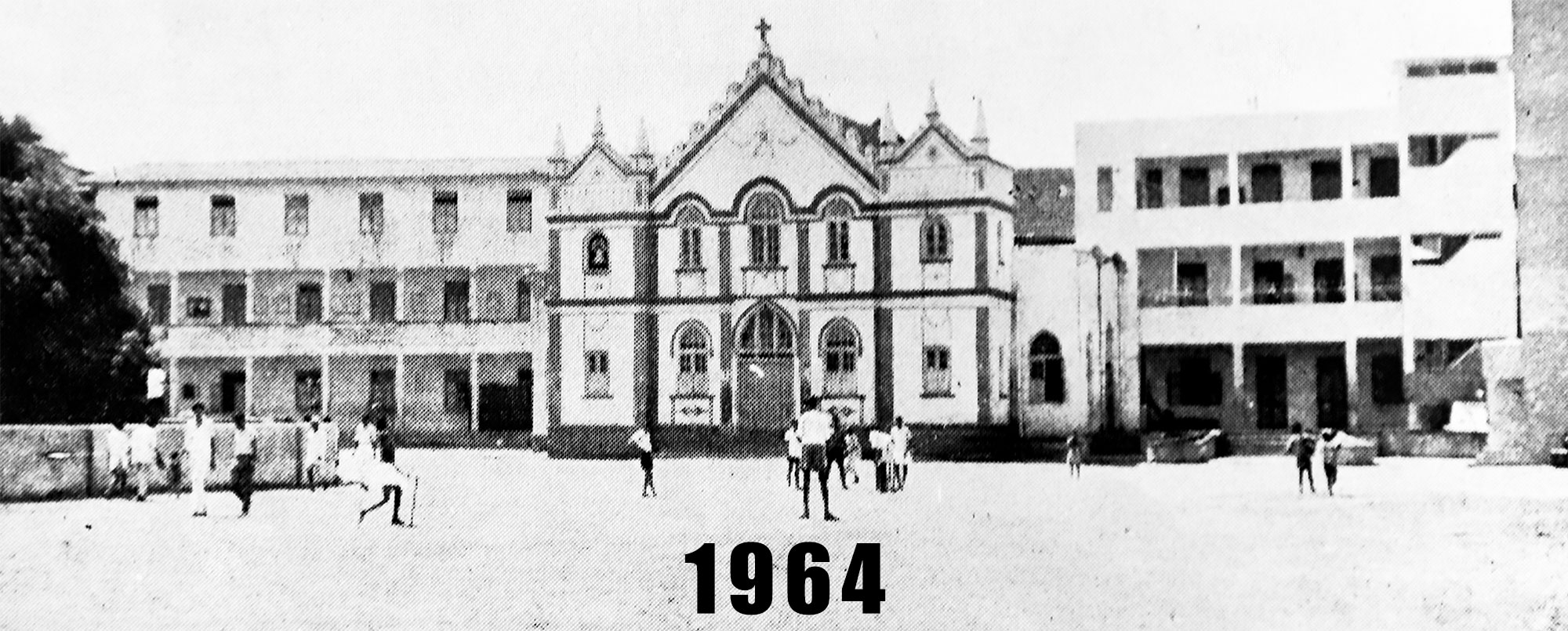
1968 - 1 June
In view of the growing number of Catholics in Vakola, the Bombay Archdiocese felt the need to appoint Monsignor Nelson Mascarenhas as Parish Priest, who became famous for organizing the Tonian Fairs to raise funds for seven years. He was responsible for adding a new School building and extending the existing one, with a big hall and more classrooms. In view of the ground getting slushy during the monsoons and inconveniencing the parishioners, Msgr. Nelson Mascarenhas constructed an asphalt approach from Nehru Road to the Church entrance. With the increase in Catholics, the parish was bursting at the seams. So more pews were put in the Church and many congregations were invited to assist in ministering to them. Some of these were nuns of the Order of Helpers of Mary who were provided flats in Rajesh Park society and Brothers of Mother Teresa who were lodged in the ancestral house of Mr. John Rodrigues, who had earlier donated the plot for the church. In September, he introduced the Parish Bulletin – ‘Tonian’, which is now ‘Anthonian’.
1971-77
Six members of the parish were honoured for their assistance with Pope’s Medals – Pro Ecclesia Et Pontifice – on Msgr. Nelson Mascarenhas’ recommendation. In 1972, he started the Youth Association and called it ‘Devil’s Kitchen’ while in 1977, he remodeled the Church interiors in keeping with the new post Vatican Council II liturgical norms. Accordingly, the statue of St. Anthony were shifted from the main altar and placed at the side. Similarly, the statue of Our Lady of Immaculate Conception was placed on the other side. A new concrete altar was erected and the Crucifix was placed in clear view. Novenas to St. Anthony and Our Lady of Perpetual Succour were started, as was the Society of St. Vincent de Paul in the parish.
1978
Msgr. Nelson Mascarenhas had started Sunday masses at two centers, where the Catholic population was rising. Two sheds, which were became chapels at Yogi Raj Ashram, near the Bombay University Campus and Prabhu Yesu Center, near the Santacruz Railway Station became vibrant Catholic communities. He also started night school classes for poor children and another for the mentally retarded. Msgr. Nelson Mascarenhas’ next appointment was St. Michael’s, Mahim parish.
1980 - 1 June
Fr. Octavian Dias took over as Parish Priest and his Assistant Parish Priest was Fr. Leslie Macfarlane, who was also an architect and building designer. They faced once again the perennial problem of accommodating parishioners as the Church proved to once again fall short. There was a huge influx as Bombay grew and Catholics moved into the suburbs. The pillars that held the Church up were also obstructing the altar view. Fr. Octavian Dias made the altar area larger by incorporating the Sacristy, which he shifted to the next door classrooms. The priests together then organized for the entire altar area to be widened to as it is today. A new roof was designed with additional RCC pillars constructed and the old pillars being removed to give the Church the look of a pillar-less hall. The roof was fitted with a false ceiling of asbestos sheets to take care of the menace of pigeons and birds.
1984 - 27 March
His Grace, Dr. Simon Pimenta, who later became Cardinal blessed the completely renovated church. The back wall of the sanctuary was marbled and only the Crucifix placed on it as per the new liturgy. The main altar and preachers stand was designed with granite stone. Mr. Morgan Miranda, son of the first Sacristan of the Church donated the Tabernacle and the floor was raised by 8 feet, which made the view clearer and steps added to reach to the altar. The statues of Mother Mary and St. Anthony were place on high pedestals on either side, so as not to distract from the sanctuary and at the same time be visible and easy for parishioners to reach. After his term, Fr. Octavian Dias was transferred to the the newly made Good Shepherd Church, Versova in Andheri West.
1986 - 1 June
Fr. Dennis Pereira was the new Parish Priest and he consolidated and completed all pending projects. The Archdiocese was short of priests so he had one less assistant priest and was forced to reduce one Sunday mass. He raised the compound wall and also extended it as the general public were trespassing it as a public thoroughfare. He brought the Passion Play depicting the suffering and crucifixion of Jesus on to the ground for full view and participation of maximum number of parishioners. A temporary stage was used on the ground and major masses for feasts, Lenten or Christmas seasons began to be held as the Catholic population had more than doubled. Computer classes and tuitions were introduced for the benefit of students of the school. Along with the Society of St. Vincent de Paul (SVP), he started the Ozanam Clinic for the downtrodden and secured the services of a Doctor to serve free of charge. It is situated behind the Presbytery, near the grotto.
1993 - 1 June
Fr. Vernon Aguiar took over as Parish Priest and initiated the St. Anthony’s Church Golden Jubilee Celebrations which was to take place in 1995. He completely renovated of the church, assisted by Mr. Allwyn D’cunha, a parishioner who designed the interiors. The wall behind the altar fitted with natural stone. A 14 feet high crucifix of the Risen Jesus with outstretched arms replaced the earlier Crucified Christ which was much smaller. The altar floor was done up in Italian marble and two majestic pillars erected on either side. A picture of Our Lady of Perpetual Succour was installed. Mr. Theo Figueredo of Pali, Bandra did the flooring marble in-lay work.
1995
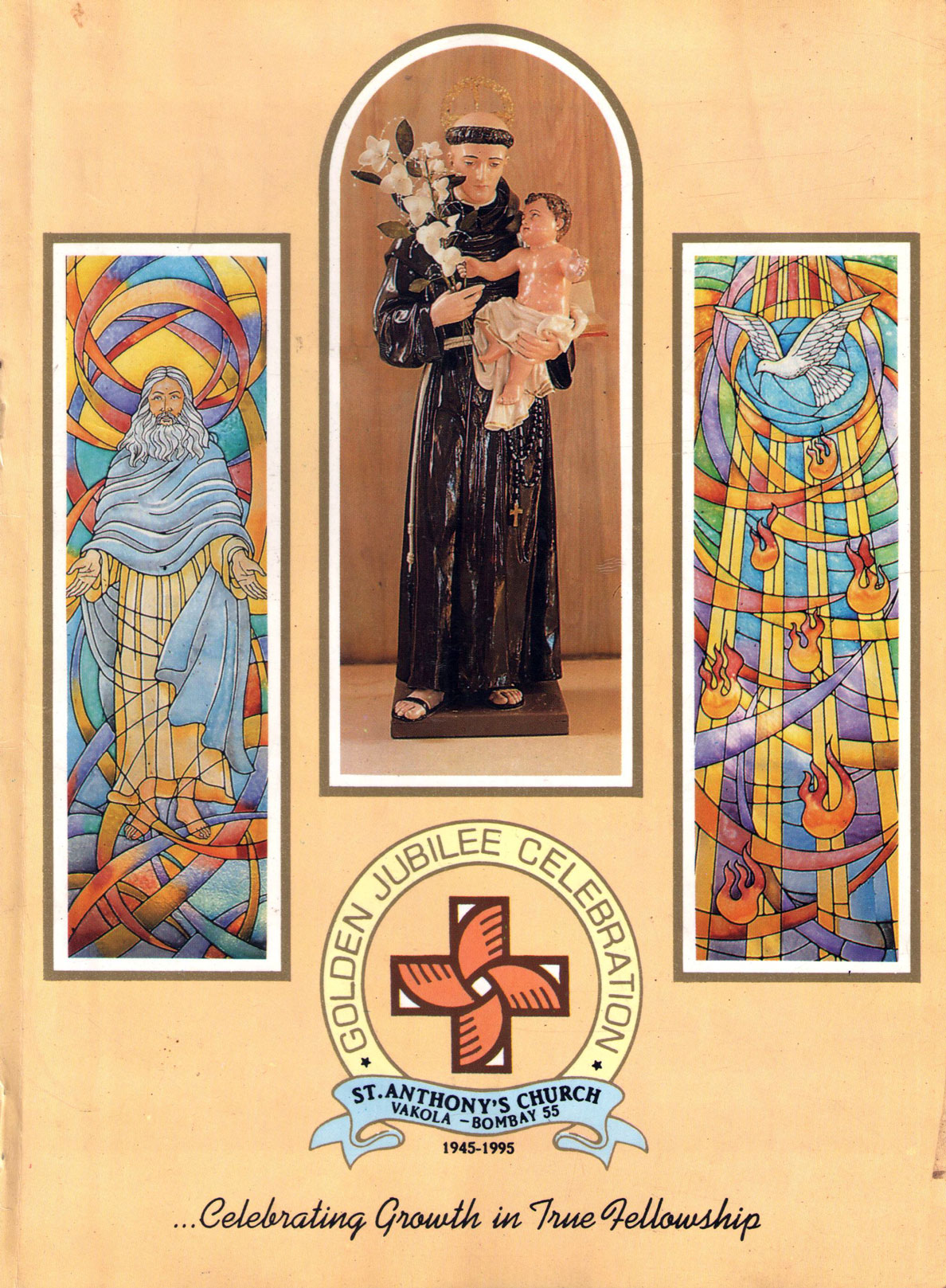 In the Golden Jubilee year, not only was the Church looking grand, but St. Anthony’s High School also had a new third floor added for science labs, library, computer rooms and an art room. The School Hall had granite tiles in-laid on the walls and white marble on the front side of the stage. The stage was redesigned to have 4 wings and 3 curtains, improved lighting, shifting backdrops and equipped to enhance performances. A new sound system, grey marble tiles to beautify the stairway and an impressive entrance of the School added to its grandeur. This was done by Mr. Bosco Fernandes of Girgaum, assisted by Mr. Felix D’souza, while Mr. Anthony Paul D’souza helped with the stage modifications and construction.
In the Golden Jubilee year, not only was the Church looking grand, but St. Anthony’s High School also had a new third floor added for science labs, library, computer rooms and an art room. The School Hall had granite tiles in-laid on the walls and white marble on the front side of the stage. The stage was redesigned to have 4 wings and 3 curtains, improved lighting, shifting backdrops and equipped to enhance performances. A new sound system, grey marble tiles to beautify the stairway and an impressive entrance of the School added to its grandeur. This was done by Mr. Bosco Fernandes of Girgaum, assisted by Mr. Felix D’souza, while Mr. Anthony Paul D’souza helped with the stage modifications and construction.
The Golden Jubilee Year was grand with a Thanksgiving and Inauguration Mass being celebrated by His Grace Bishop Ferdinand Fonseca on 15 January 1995 and the celebrations continued with a Cultural Evening on 26 February 1995. The Lenten 3 hours agony was preached by His Eminence Oswald Cardinal Gracias and Fr. JB Fernandes, SJ gave 10 session on Deeper Insights of the Mass to the parish. The youth groups (SAY/SASSCO) organized throughout the year different kinds of sports – mini marathon, football cup, talent search, etc. The parish on 15 August 1995 organized a huge Carnival with floats. The parish feast and Parents Day was celebrated with live bands – Rock N Roll Heroes – with the grand finale being a Five Night Antonian Fete from 21 – 25 October 1995.
2016
St. Anthony’s Goes Hi-Tech – Rising to a Higher Level
Post 2016 with the appointment of Fr. Felix D’souza as Parish Priest and supported by an equally enthusiastic and co-operative parish team, St. Anthony’s took off to another level. It went energy-efficient with large HVL solar power fans replacing the hanging ceiling ones. These are not only cost-saving but also environment friendly. In order to improve the church attendees experience and facilitate worship; projectors, LED screens and audio-visual equipment were installed. The Drama and Theater Ministry was started and Communications Cell was empowered to create and publish content. The parish Facebook and YouTube social media channels started to be effectively used as online platforms. In March 2018, thanks to Fr. Nasli Reporter, the St. Anthony’s App was launched.
The Eucharistic Adoration Chapel was completely renovated. A revolving statue of St. Anthony and Mother Mary was placed at the Church entrance and a statue of Jesus welcoming all was placed on the top of the Church, making it visible to general public. A huge Last Supper statue found its place into the Church too. The grotto was beautifully redesigned and CCTVs surveillance protected the premises with bright lights liting up the church compound. A shed outside the Church was erected to accommodate the outstanding Catholics and chairs placed for them to comfortably attend Church services.
The Bridgettine Congregation of our parish observed the canonization (5 June 2016) of St. Maria Elizabeth Hesselblad, their founder by Pope Francis with a Special Mass on 6 August 2016 with His Eminence, Cardinal Oswald Gracious as main celebrant and Fr. Felix D’Souza, Fr. Joseph Pimenta and Fr. Angelo Lobo as concelebrants. Fr. Lawrence D’Souza joined in the celebrations too.
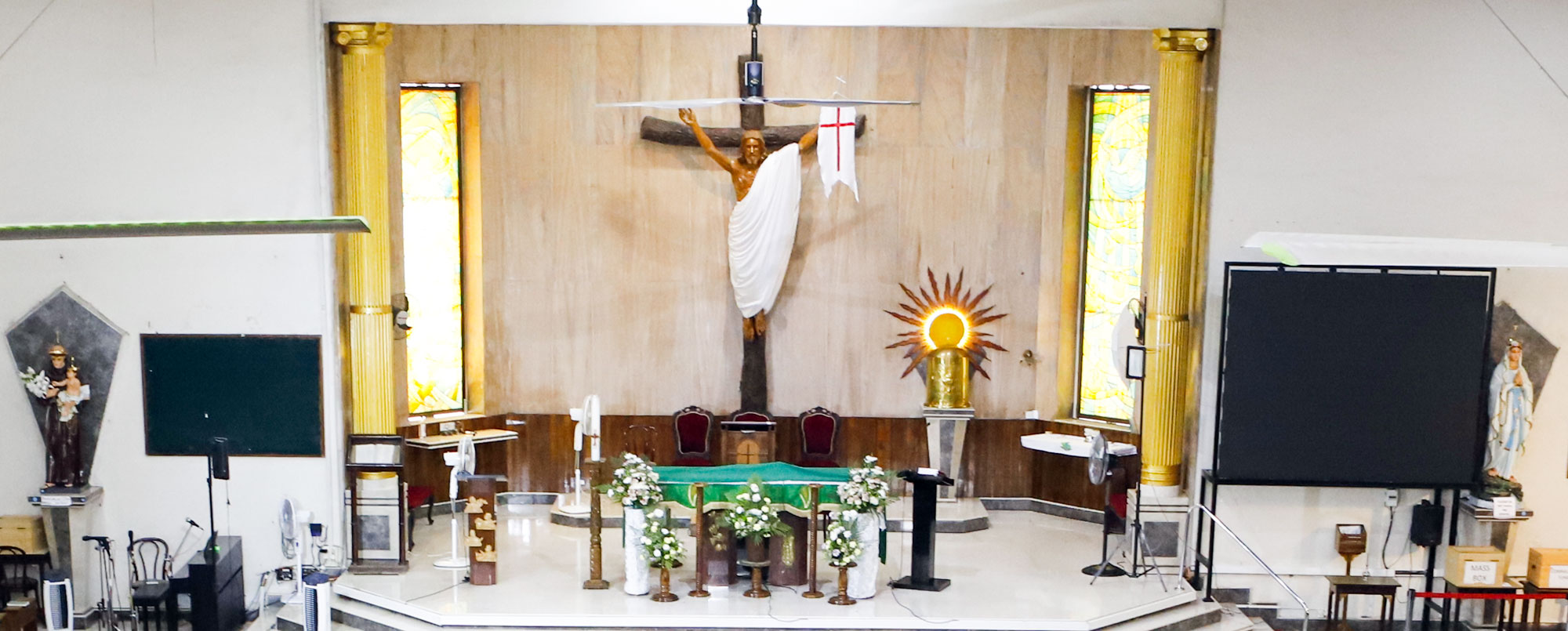
2017
In 2017, there were four major activities taken up:
1. Clean Vakola
A project to identfy dirty areas of the parish, click photos and bring it to the notice of the municipal corporator. At least one of them responded by increasing garbage collection in the area.
2. Healthcare Guild
The data of health-related professionals from our parish, like doctors, nurses, dentists, pharmacists, yoga trainers, dieticians and athletic trainers were collated zone wise. Invites were sent out to these professionals for meeting to which 20 professionals responded and decided to form a group and work to support the church.
3. Care Centre for Senior Citizens
A centre for 50+ years parishioners with a healthy lifesty was launched on the ground floor of Rajesh Park on 15 August 2017. It functions Monday to Saturday twice daily. The charges to use the equipment are nominal to defray the monthly expenses incurred. Fr. Felix, being ever so thoughtful, felt this was the need of the hour as nearly 43% of our Parishioners are senior citizens in this group.
4. Herbal Garden
A Herbal Garden on the left side of the small entrance of the church was started. Two banners giving details of these herbal and medicinal plants and their uses were at the entrance of the compound wall. Having these plants at home makes things much simpler and easier as naturopathy or for home remedies. The aim of this garden is to encourage parishioners to grow these plants in their homes
and have a healthy lifestyle.
2018
The parish put together three musical dramas – Life-giver Jesus Christ (March 2018), Joseph and The Amazing Technicolour Dream Coat (December 2018), while The Parish Pastoral Council members had NLP session held and were sent for training.
St. Anthony’s church, Vakola, along with the Archdiocesan Centre for Social Action (CSA) offered the church premises to tribal groups from the Raigad district to sell their fresh, out-of-the-farm produce. On 10th December 2018, in addition to their own products, these tribals were guided by CSA to buy fresh vegetables, nachni flour and other homemade products from their neighbouring tribal self-help groups and sell them in the city. This experience sowed seeds of entrepreneurship among the tribals, who exclaimed they had not earned so much money at a time in their lives. The ever patronizing parishioners opened their hearts not only in welcoming them, but also purchasing and supporting this noble cause of – Food for the tribals and food for your soul by reaching out.
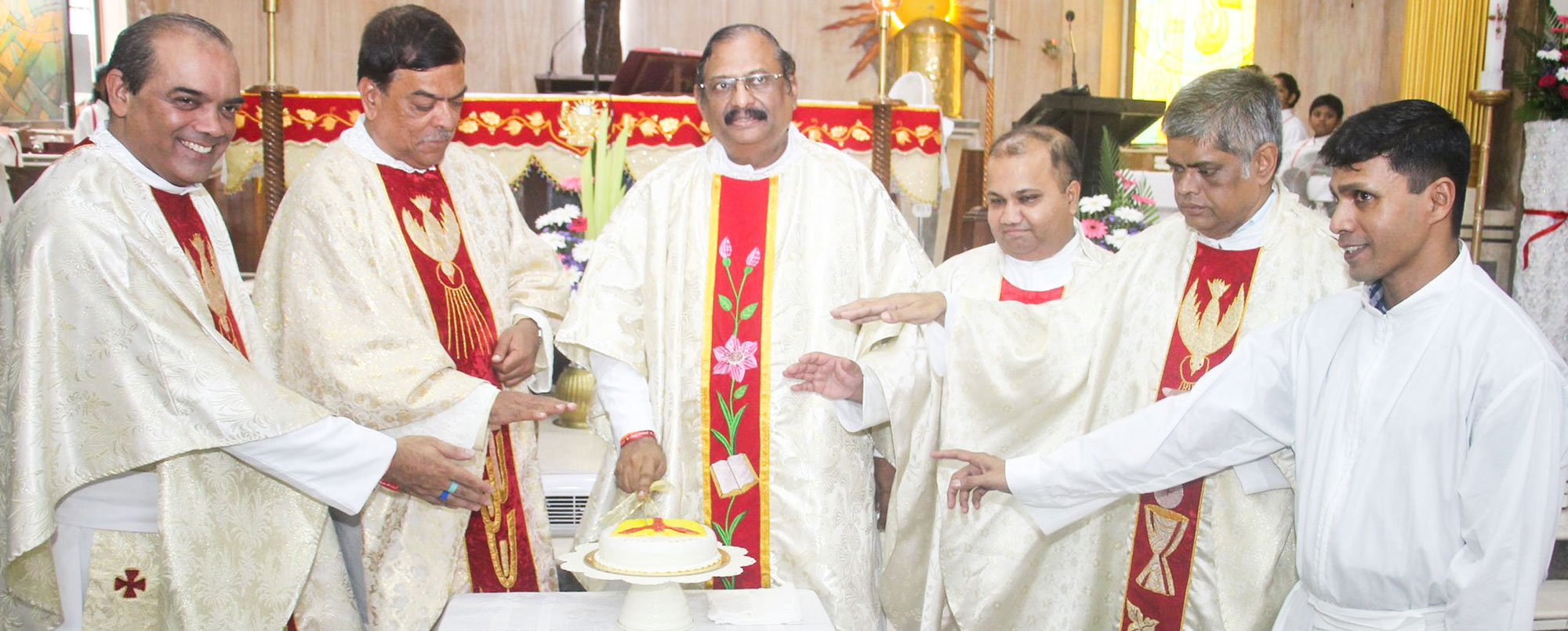
2019
A Musical – Love Is… was staged in December 2019. The Diocesan Youth Council (DYC) Youth Festival – YOUTSAV 2019 on 8th December was also hosted in the parish. St. Anthony’s High School hosted the H Ward Science Exhibition from 3 – 5 December 2019. During this year, the following major activities were undertaken:
1. Van Service for the Physically Challenged
For those who would love to attend Mass but could not come to Church due to ill health or handicap, the new initiative ensured they were not deprived of attending Mass. A van service with flexible timings was introduced every Saturday evening and Sunday morning. The eight-seater van was also utilized for the New Year’s Eve service, the Mass for the sick and homebound, Ash Wednesday and feast days.
2. Antonian Harmony Club
On 17 January 2019, the Antonian Harmony Club, a Music Learning Outreach was started. The project was born of the perceived need whereby, even with a wealth of musical talent in our parish, many would find it difficult to afford a musical instrument or commercial music classes. Generous donors contributed to a initial pool of musical instruments – 3 keyboards and 5 guitars to start with. Musically gifted parishioners readily and enthusiastically volunteered to teach. The classes have progressed well with close to 60 students to begin with learning the keyboard, guitar and drums.
3. Asha Kiran Completes 25 Years
The Community Centre of the Parish celebrated its Silver Jubilee on March 19, 2019. Fr. Lancy Pinto, the Chief Guest spoke highly about the functioning of the Centre and encouraged our women to actively participate in all activities which were beneficial to them and also helped other downtrodden to come up in life
4. Employment Bureau Service
Finding a good job is truly difficult. We may have years of experience under our belt, academic records to back us, but the right opportunity at the right time is something we all look out for. Most of the time, our direction may not be right. This often is a concern for the employer too, as finding the right candidate could be a task in itself. The Employment Bureau of St. Anthony’s Church Vakola tries to bridge this gap. It is working on a database of job-seekers and personnel managers or employers.
2020 - 2021 COVID Witness
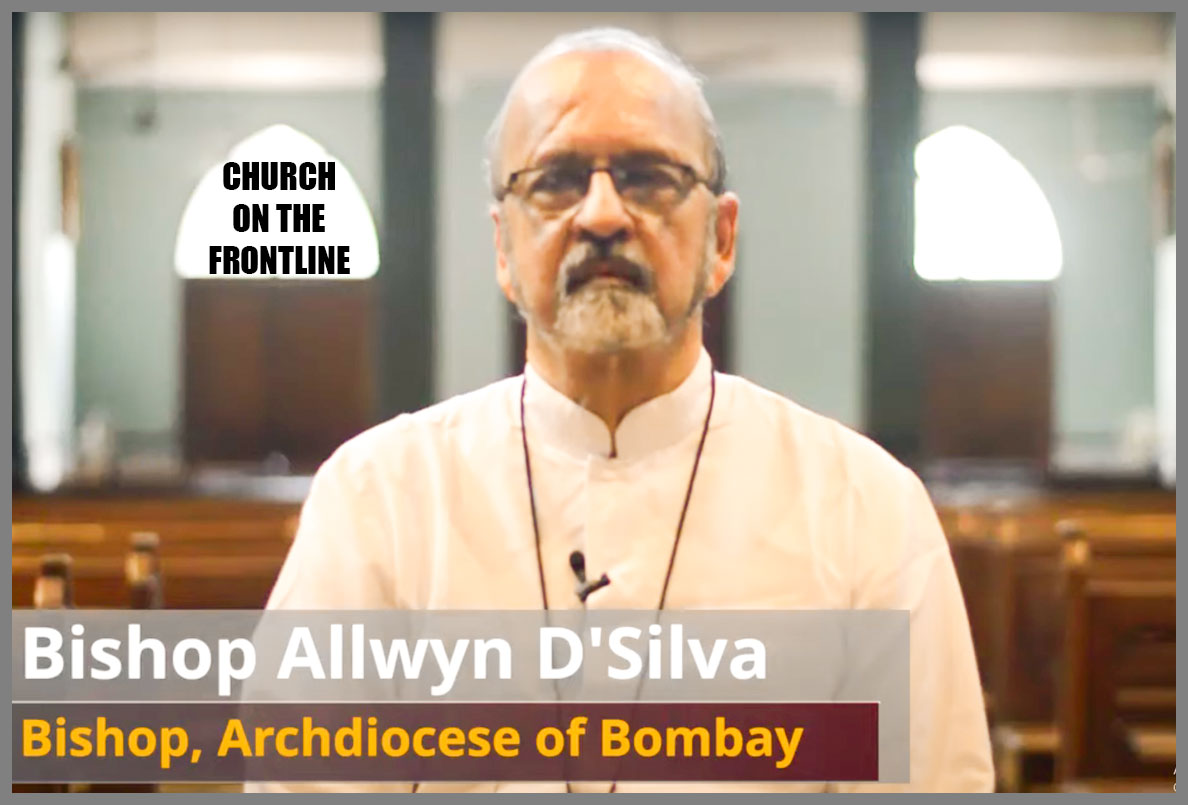 St. Anthony’s Outshines During the Pandemic – One would have expected the corona virus to have dampened the spirits in Vakola, rather far from it, the parish team and religious with lay collaborators rose valiantly to the challenge. Bishop Allwyn D’Silva’s CHURCH ON THE FRONTLINE (Episode 12) records the accomplishments as highlighted by Fr. Felix D’souza, leading from the front. According to him, when it became clear to all concerned in March 2020 itself that churches would have to be closed for some time, the parish fathers and religious decided that parishioners could not be deprived of their spiritual needs. Besides, St. Anthony’s being a vibrant parish with many activities, there was need to maintain a connect and take the church to parishioners homes via the internet.
St. Anthony’s Outshines During the Pandemic – One would have expected the corona virus to have dampened the spirits in Vakola, rather far from it, the parish team and religious with lay collaborators rose valiantly to the challenge. Bishop Allwyn D’Silva’s CHURCH ON THE FRONTLINE (Episode 12) records the accomplishments as highlighted by Fr. Felix D’souza, leading from the front. According to him, when it became clear to all concerned in March 2020 itself that churches would have to be closed for some time, the parish fathers and religious decided that parishioners could not be deprived of their spiritual needs. Besides, St. Anthony’s being a vibrant parish with many activities, there was need to maintain a connect and take the church to parishioners homes via the internet.
Bishop Allwyn D’silva describes it as a holistic, creative and meaningful witness that touched the lives of thousands, especially those suffering and the marginalized. Fr. Felix D’souza said Pope Francis’ reflection inspired him. At the start itself, the Holy Father said the pandemic was a storm in which all were caught-up wondering when it would end. The pandemic according to him had put all of us in a tomb closeted from each other and there was need to roll the tombstone for a resurrection. The issue was who would bell the cat? The church needed to rise and be the one to roll the tombstone by using its gifts, talents, resources, charisms… to become alive to our parishioners.
Accordingly, three areas for action were identified:
1. Worship – The Church’s primary responsibility remained the spiritual welfare of its flock. Holy Mass was live streamed and remains so to date. Prayer services, including Rosary, Holy Hours, Taize Meditation, Feast Novenas and those for special intentions like students preparing for exams, dealing with emotional and mental stress, etc. Even Sunday School and Confirmation Catechism Classes were held on Zoom and all sections of the parishioners were connected online. The audience response was enthusiastic which spurred the parish on.
2. Programs – St. Anthony’s being a very large parish, most parishioners throughout the year participate in its activities. The team wanted to continue their involvement through virtual platforms to keep their spirit from dying out. Unique online events for kids, young, working adults and even senior citizens were organized. Faith Academy for children, the youth had virtual interaction with experts on skill development and how to face post-COVID times. Adults and Senior Citizens were tutored on health issues and lifestyle diseases. There was online entertainment by parishioners and by parishioners regularly through out the lock-down. There was also a mental health counsellor available with a helpline on mobile to assist.
3. Outreach – Humanitarian gestures of relief through free distribution of rations and essential supplies to the jobless, down-trodden and families with COVID patients had many thanking St. Anthony’s for the kindness. With salary cuts and unemployment electricity or even rent bills could not be paid and here also the Church stepped in. Many families could not buy drugs or medicines, which is when the parish tied-up with certain chemists and bore the expenses. Institutions like Asha Kiran, the community center, WIN Home and other religious pitched in to get police permissions, co-ordinate hospital admissions, run a community fridge and even buy machinery to empower women and supplement the household income.
Fr. Felix puts it well when he says – The power of the Lord was felt. Truly, lock-down did not lock the Lord’s presence in the hearts and was made real to our parishioners.
